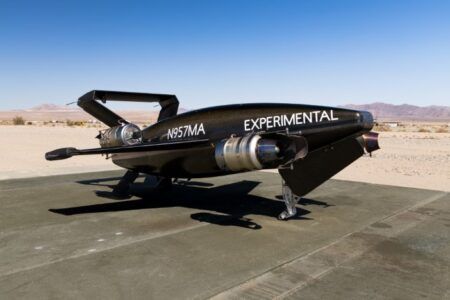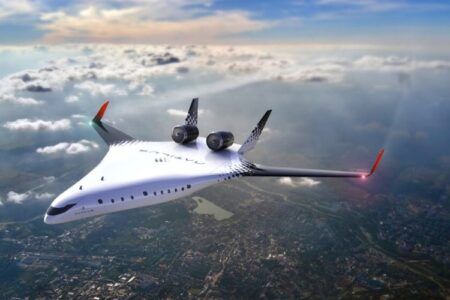Following President Trump’s memorandum of October 25 permitting states, localities and tribes to craft their own pilot programs to test drones, Vanilla Aircraft has announced that its VA001 has completed its first five-day flight.
The 36ft wingspan, diesel-powered UAS landed after a successful 5 day 1 hour 24 minute flight of over 7,000 miles, which broke the record for longest unmanned combustion-powered flight. The aircraft landed with three days of fuel remaining on board, having carried multiple payloads, including a NASA-furnished multispectral imager and a DoD-furnished sensor and radio.
The company believed this flight, its 10th, was particularly useful in demonstrating the practical use of an ultra-endurance heavy fuel aircraft with a logistics footprint a fraction of those required by other current unmanned air systems.
The aircraft executed a pilot-controlled take-off, was switched to autopilot control, and quietly orbited above Wallops Island’s Virginia Space UAS Runway at 5,000ft in a two-mile orbit, maintaining the flight path to be flown with another soon-to-be-installed camera system. Five days later, on October 23, it made a successful autonomous landing back at NASA Wallops.
Chief Engineer Neil Boertlein remarked, “As exciting as this milestone is, the flight itself was quite boring. The plane did what it was designed to do and landed ready to go right back into the air again.”
The aircraft carries up to 1.1ft³ of payload, with a 30 lb weight limit, and provides 800W of power. Built to operate for up to 10 days at altitudes up to 15,000ft with a dash speed of 75kts and loiter speeds of around 55kts, the VA001 is intended to enable users to devise many missions capitalizing on its open design.
The ultra-long endurance capability of the VA001 is intended to enable persistent operations for both commercial and military applications. It is expected that additional flights will demonstrate the capability to carry classified and unclassified payloads, including electro-optical and infrared imagers, synthetic aperture radar, SIGINT systems, communications nodes and more. Likely commercial applications include agricultural mapping, disaster zone imaging, cellular network and internet distribution, and infrastructure monitoring.
Test director Jeremy Novara remarked, “Previous flights had already validated our performance predictions, but this flight really demonstrated the reliability and ease of operation that a low-cost persistent unmanned aircraft can obtain.”
The company plans to begin production in the coming months, and is open to teaming with payload providers.
Photo credit: NASA/Terry Zaperach
November 2, 2017




